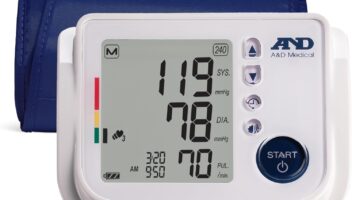Embracing the Light: Understanding Seasonal Affective Disorder
When winter’s chill descends, many of us find comfort in cozy blankets and hot cocoa. But for some, the season brings about something much heavier – a deep and persistent sadness commonly known as Seasonal Affective Disorder (SAD). As the days grow shorter and the sunlight dims, our mood may plummet, leading to feelings of hopelessness and fatigue. But here’s the good news: understanding SAD and seeking support can empower you to rise above its grip.
What is Seasonal Affective Disorder?
Seasonal Affective Disorder is more than just the winter blues. It is a type of depression that occurs at specific times of the year, typically when the seasons change. Symptoms can range from feelings of sadness to significant changes in sleep and appetite.
- Low energy
- Changes in sleep patterns
- Difficulty concentrating
- Cravings for carbohydrates
- A sense of hopelessness
Imagine waking up every day feeling like you’re moving through molasses while everyone around you seems to be thriving. That was my experience several winters ago. I remember standing in front of my window, yearning for sunlight to seep into my home. But what I found instead was a fog settling in my mind, clouding my thoughts and motivation.
Why Does SAD Happen?
The exact cause of SAD isn’t fully understood, but researchers believe it’s related to changes in light and circadian rhythms. The lack of sunlight in winter months can disrupt our internal body clock, leading to a drop in serotonin levels, a neurotransmitter that contributes to feelings of well-being and happiness.
- Melatonin Changes: Shorter days can lead to an increase in melatonin production, the hormone responsible for sleep, making us feel more tired and lethargic.
- Vitamin D Deficiency: Sunlight is a vital source of Vitamin D, and a deficiency might contribute to depression during those darker months.
As the winter of my sixth year in college approached, I found myself spiraling. I was overwhelmed with assignments and life changes. On many days, I felt like I was watching the world pass me by from a distance. It wasn’t until I started understanding these biological processes that I began to make sense of my feelings.
Finding Hope During the Dark Days
Dealing with SAD is challenging, but it’s also an opportunity to discover coping mechanisms that can bring light into your life, no matter the season. Here are some strategies that helped me:
-
Embrace Natural Light: Open your curtains and let the sun in! On cloudy days, consider investing in a light therapy box. This bright light mimics natural sunlight and can help elevate your mood.
-
Stay Active: Even a brisk walk around the block can invigorate you. Physical activity releases endorphins, those feel-good hormones that can counteract feelings of sadness.
-
Connect with Others: I found solace in sharing my experiences with friends and family. Letting others know what you’re going through can lighten the weight of isolation.
- Consider Online Therapy: If you’re struggling to cope, know that you’re not alone. Accessing therapy online is easier than ever, providing you with professional support from the comfort of your home. Explore options for depression treatment here. You deserve to find the help that works for you.
Personal Strategies to Combat SAD
Through trial and error, I discovered several personal strategies that made a significant difference:
-
Journaling: Writing down my thoughts helped me untangle the confusing emotions swirling in my mind. It was like talking to a friend – but the friend was me, and I could share without judgment.
-
Creative Outlets: Painting and crafting became my go-to activities. Creating something tangible allowed me to express my feelings and escape into a world of color and creativity.
- Mindfulness and Meditation: Practicing mindfulness has been a game-changer for my mental health. I started small, focusing on my breath for a few moments every day, and gradually incorporated longer meditation sessions.
To anyone reading this who may feel the weight of SAD, remember that it’s okay to seek help and take steps toward feeling better. There’s no one-size-fits-all approach, but the journey to finding your light is worth it.
Seeking Professional Assistance
If you’re noticing signs of SAD, consider reaching out for support. Finding the right therapist can make all the difference. Online therapy offers flexibility, convenience, and the ability to connect with professionals who understand your struggles. Whether it’s cognitive-behavioral therapy, mindfulness techniques, or medication discussions, having an expert guide can help illuminate your path toward healing.
You can explore depression treatment options accessible from anywhere with just a few clicks here. Investing in your mental health is the best gift you can give yourself.
Finding Your Inner Sunshine
Living with Seasonal Affective Disorder can feel isolating, but remember – spring will always follow winter. By equipping yourself with knowledge and utilizing support systems, you can navigate through the gloom and rediscover your inner light. Despite those dark months, there is always hope, connection, and help available.
You’ve got this! Embrace the upcoming seasons with open arms, knowing that even the lowest of times can lead to brighter days ahead. 🌼✨
Disclosure:
Hospitals.net is a participant in the Amazon Services LLC Associates Program, an affiliate advertising program designed to provide a means for sites to earn advertising fees by advertising and linking to Amazon.com, .ca, .co.uk, etc.
AI Disclaimer:
Hospitals.net uses artificial intelligence (AI) tools to assist in gathering and summarizing product information, including reviews and other relevant data for Amazon products and services. While we strive to ensure the accuracy of the information provided, AI-generated content may not always reflect the most up-to-date or accurate details. The information on our site should not be considered professional advice, and users are encouraged to verify any product details directly with Amazon or other official sources before making a purchase.
We do not guarantee the completeness or accuracy of the AI-generated content and are not liable for any discrepancies or errors. Any reliance on the information provided is at the user’s own risk. By using this site, you acknowledge that product availability, pricing, and other details may change over time, and Hospitals.net is not responsible for these changes.
Health Disclaimer:
The health products and information provided on Hospitals.net are for informational purposes only and are not intended to substitute professional medical advice, diagnosis, or treatment. Always consult a qualified healthcare provider or medical professional before using any health products or following any advice you find on this site. The content on Hospitals.net, including product recommendations and reviews, is not a substitute for individualized care from a healthcare provider.
We make no warranties or representations regarding the effectiveness, quality, or safety of the products listed on our site. Any use of these products is solely at your own risk. Hospitals.net is not liable for any harm, injury, or adverse effects that may result from the use or misuse of the health products or information provided.
Please read all product labels, warnings, and directions provided by the manufacturer before using any product. If you have any questions about a product or its suitability for your condition, we recommend contacting the manufacturer directly or consulting a healthcare professional.
If you have any concerns regarding the accuracy of the information on this site, please contact us for further clarification.



